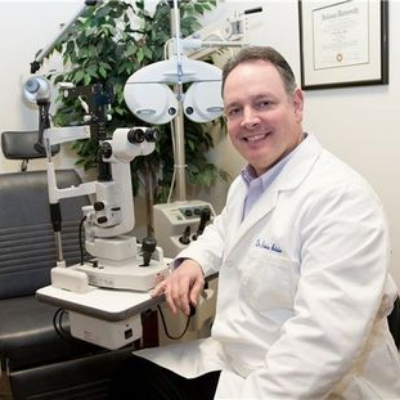Comprehending the Comprehensive Function of an Optometrist in Modern Eye Treatment
In the advancing landscape of medical care, the extent of an optometrist's role has considerably expanded, expanding well past the boundaries of traditional vision adjustment. With developments in innovation and a raising focus on preventative treatment, optometrists are important in identifying and taking care of persistent eye conditions, while also participating in early condition discovery. Their expertise in advanced analysis strategies such as optical comprehensibility tomography is vital. Exactly how do these obligations intersect with their duty in advertising overall eye wellness, and what does this mean for individual outcomes in a joint medical care environment?
Expanded Range of Technique
In current years, the role of optometrists has progressed dramatically, with several specialists now welcoming an expanded extent of method that prolongs beyond conventional eye evaluations. Their obligations currently incorporate a broad range of services, consisting of recommending drugs for ocular problems, handling chronic eye conditions, and carrying out small medical procedures.
Better, eye doctors are currently more entailed in collective treatment, functioning closely with eye doctors, health care medical professionals, and other healthcare experts to ensure holistic individual care. This interprofessional partnership is essential in taking care of intricate situations that call for a multidisciplinary technique. Additionally, optometrists are playing a pivotal duty in public health and wellness campaigns, such as vision screenings and eye wellness education, targeted at boosting community health results.
The expanded scope of method for eye doctors not just enhances their ability to offer comprehensive treatment yet additionally attends to the expanding need for reliable and easily accessible eye care solutions, contributing to total health care enhancements.
Early Disease Detection
Early discovery of eye conditions is increasingly ending up being a prime focus in the broadened function of optometrists. As main eye treatment providers, eye doctors are uniquely positioned to recognize very early signs of ocular conditions such as glaucoma, macular degeneration, diabetic retinopathy, and cataracts. This critical duty is critical, as early medical diagnosis can considerably improve the management and prognosis of these problems, possibly avoiding vision loss and improving client results.
Optometrists employ extensive eye exams to spot subtle modifications in vision and eye wellness. These examinations usually consist of assessments of aesthetic skill, intraocular pressure, and retinal health. The capacity to recognize very early signs of systemic wellness problems, such as high blood pressure and diabetic issues, via ocular indicators further underscores the importance of regular eye exams. Early treatment is not just beneficial in preserving vision yet additionally in lowering medical care expenses related to innovative condition therapies.
Additionally, optometrists play a vital duty in individual education, highlighting the significance of regular eye evaluations as part of general health upkeep. By fostering an aggressive approach to eye treatment, optometrists add substantially to public health, making certain illness are captured and managed properly prior to they can proceed.
Advanced Diagnostic Methods
Advanced analysis techniques have actually revolutionized the practice of optometry, allowing specialists to spot and monitor ocular conditions with unprecedented accuracy. These advancements have changed the optometric landscape, allowing for much more innovative evaluation and treatment techniques. Technologies such as optical comprehensibility tomography (OCT) offer high-resolution, cross-sectional pictures of the retina, helping with very early detection of problems like glaucoma and macular degeneration. This non-invasive strategy has actually become vital in contemporary optometry, providing in-depth understandings right into retinal layers.
One more crucial innovation is electronic retinal imaging, which records thorough sights of the retina making use of high-def cams. This modern technology is critical in recognizing adjustments in retinal framework gradually, thus assisting in the monitoring of conditions like diabetic retinopathy. Visual area testing, enhanced by computer-aided systems, enables exact mapping of an individual's area of vision, vital in diagnosing and tracking glaucoma progression.
Corneal topography, an additional remarkable analysis tool, produces topographic maps of the cornea's surface. This is specifically advantageous in suitable call lenses and preparing refractive surgical procedure. These innovative analysis strategies jointly allow optometrists to give aggressive, targeted treatment, making certain much better patient end results and strengthening their pivotal duty in eye health and wellness management.
Managing Chronic Eye Problems
Managing chronic eye problems is a foundation of optometric care that calls for a detailed understanding of numerous ocular conditions and their lasting implications. Eye doctors play an essential role in managing, monitoring, and diagnosing problems such as glaucoma, diabetic person retinopathy, and age-related macular degeneration. These problems, if learn this here now left neglected, can lead to considerable aesthetic impairment or loss of sight, highlighting the vital value of recurring treatment and monitoring.
Optometrists employ a variety of analysis tools, consisting of optical Eye Doctor comprehensibility tomography (OCT), aesthetic field screening, and fundus photography, to analyze the development of these chronic problems. By carefully monitoring changes in eye health, eye doctors can adjust treatment strategies to alleviate illness development. This might entail suggesting medications, recommending way of living modifications, or coordinating with ophthalmologists for surgical interventions when required.

Duty in Preventive Treatment
Precautionary treatment is a fundamental facet of optometry that concentrates on maintaining eye health and preventing the start of eye conditions. Optometrists play a critical function in very early discovery and avoidance, employing regular eye exams to recognize risk variables and subtle modifications in eye wellness. Eye Doctor. These examinations are not merely about vision correction yet include a thorough assessment of eye functions and frameworks, making it possible for the identification of problems such as glaucoma, cataracts, and macular degeneration at a beginning
In enhancement to diagnostics, eye doctors inform clients on way of life selections that promote eye wellness, such as correct nutrition, UV security, and the importance of normal eye examinations. They recommend on the proper usage of electronic devices to avoid digital eye pressure, a growing problem in the digital age. Eye doctors also supply guidance on protective glasses for work and leisure activities, mitigating the danger of injury.
Preventative eye care includes systemic wellness problems that materialize in the eyes, such next as diabetes mellitus and hypertension. By teaming up with other healthcare professionals, optometrists add to holistic patient treatment, stressing the interconnectedness of ocular and systemic health and wellness. This positive technique is necessary in guarding visual skill and total well-being.
Final Thought
Optometrists now inhabit a pivotal duty in modern eye care, characterized by an increased scope that consists of identifying and taking care of chronic eye problems, suggesting medicines, and executing minor operations (Eye Doctor Optometrist). Their know-how in very early illness detection is enhanced by innovative diagnostic techniques such as optical coherence tomography and electronic retinal imaging. By stressing precautionary care and client education and learning, optometrists contribute dramatically to general eye health, working together with various other healthcare experts to make sure reliable and extensive person outcomes

In addition to diagnostics, eye doctors educate patients on way of life choices that advertise eye health, such as appropriate nutrition, UV defense, and the value of normal eye check-ups.Precautionary eye care extends to systemic health and wellness concerns that manifest in the eyes, such as diabetes mellitus and high blood pressure.Optometrists currently occupy an essential function in contemporary eye treatment, identified by an increased range that consists of detecting and managing chronic eye problems, recommending medications, and carrying out minor medical treatments.